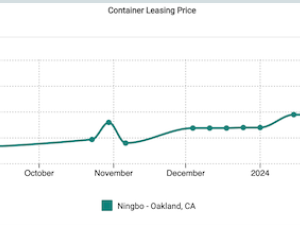South Korea surpassed China as the industry's most sought after shipbuilder in the first half of this year as shipowners ordered more liquefied natural gas (LNG) tankers, mega containerships and other complex vessels in which South Korea specializes.
The industry has turned away from "cookie-cutter" dry bulk carriers and tankers, segments dominated by Chinese shipbuilders, due to an oversupply of vessels that have depressed freight markets and bankrupted many shipping firms. It is increasingly turning to sophisticated, environmentally-friendly ships built in South Korea.
"Market demand has shifted to mega containerships and offshore oil vessels, which Korea is more competitive than China," said Zhang Changtao, chief researcher of the China Shipbuilding Economy Research Center in Beijing. "It will be very difficult for China to catch up or even surpass its Korean colleagues this year or next."
The Baltic Exchange's benchmark dry freight index has plummeted nearly 30 percent so far this year, forcing shipowners to delay or cancel orders for dry bulk carriers and focus more on niche markets, such as LNG tankers.
Fears of a double-dip recession in the United States and other developed economies have only exacerbated the situation.
LNG Demand
Orders for capesize dry bulk carriers fell nearly 60 percent year-to-date in June, while demand for LNG tankers surged 11-fold over the same period, according to a recent report from shipbroker Clarksons. Analysts expect the downturn for capesize ships, the largest category of dry bulk vessels, to continue through 2012.
A typical LNG tanker costs $200 million, nearly four times more than a capesize vessel.
"South Koreans are highly advanced in technology, which means that they can tap into high-value vessels such as drillships, LNG carriers and container ships," said Arctic Securities analyst Erik Nikolai Stavseth.
"China on the other hand has been building these giant bathtubs that are of fairly low complexity. There definitely is a quality difference between China and South Korea."
Korean yards were awarded shipping contracts totalling 8.9 million compensated gross tons (CGT) worth $31.4 billion in the first half of 2011, compared to China's 5.2 million CGT at $8.8 billion, according to South Korea's Ministry of Knowledge Economy .
That puts South Korea on pace to surpass China for the first time on an annual CGT basis since 2006. A CGT is an industry unit used to measure the amount of work necessary to build a given ship.
Greener Ships
Shipowners are demanding not only more complex vessels, but more fuel efficient and less polluting ships due to volatile oil prices and tougher environmental standards.
The U.N.'s International Maritime Organization last month agreed on energy efficiency design standards to substantially cut greenhouse gas emissions in new ships from 2013, although China and other developing nations have secured a waiver to extend that deadline by another six years.
South Korea's Daewoo Shipbuilding & Marine Engineering
The giant Triple-E class container vessels will be the largest ships of any type in the world's global fleet and will produce 50 percent less CO2 per container than the typical vessel travelling between Asia and Europe, Maersk said.
"Most Chinese shipyards are likely to give this round of mega container ship orders a miss," said Geoffrey Cheng, an analyst at BOCOM International. "So, what they should do is try to think ahead, such as what kind of ships the market will need in the next few years."
The strong demand for comple
has contracts worth around $3.8 billion to build 20 of the world's largest container ships for industry leader A.P. Moller Maersk





